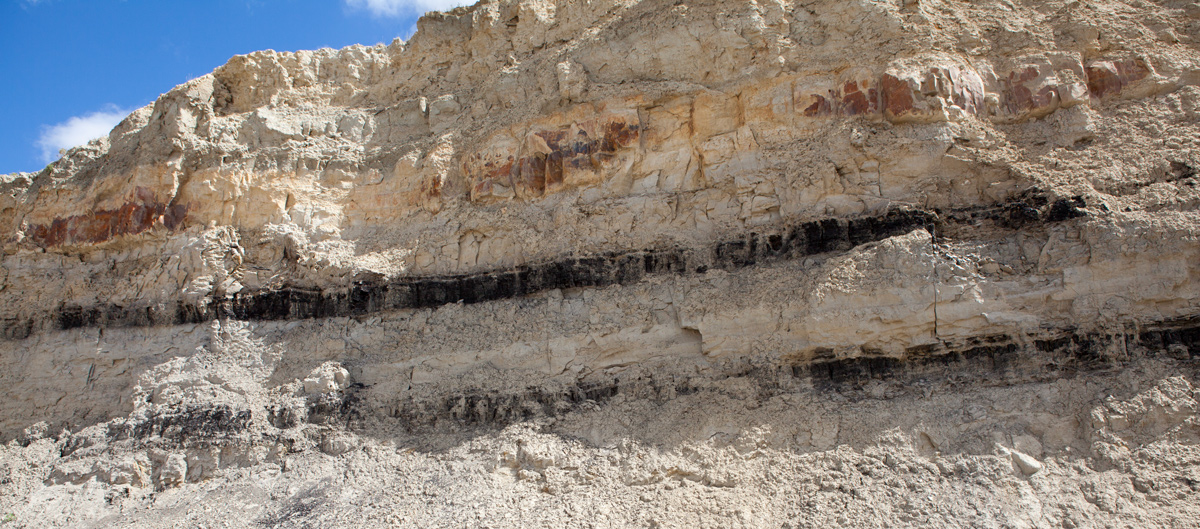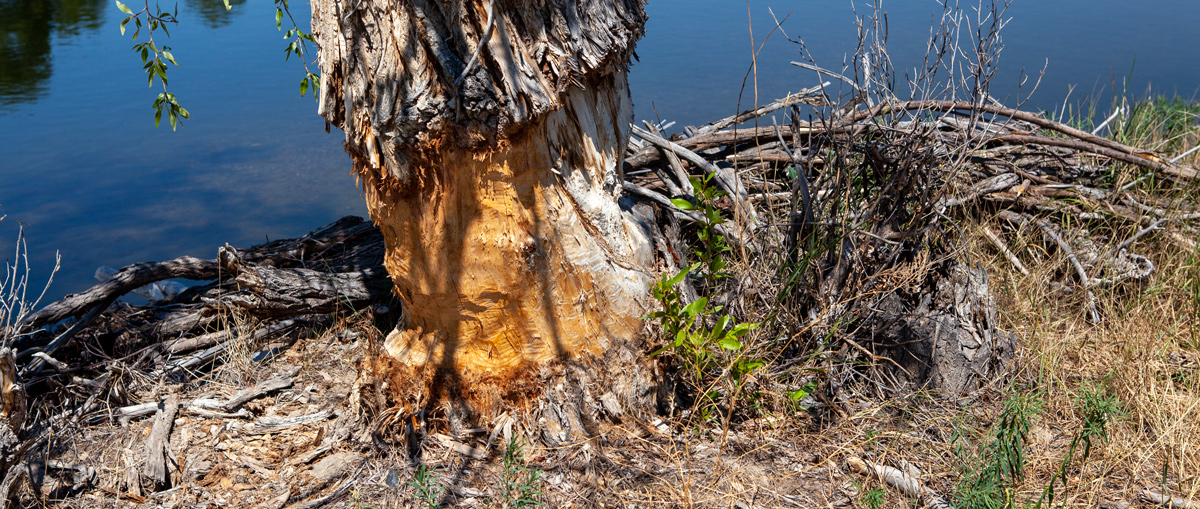As they paddle up the Missouri River in present North Dakota, John Ordway notices four-feet-thick piles of ice left from the spring melt. Clark remarks on the quality and quantity of beaver and Lewis remarks on the seams of lignite coal seen in the hills. Camp is opposite Beaver Creek near the present White Earth River.
Lignite Coal
Fort Union Formation
Near Fort Union Trading Post National Historic Site, 26 July 2013. © by Kristopher K. Townsend. Permission to use granted under the Creative Commons Attribution-Share Alike 4.0 International license.
I believe it to be the stratas of Coal seen in those hills which causes the fire and birnt appearances frequently met with in this quarter. where those birnt appearances are to be seen in the face of the river bluffs, the coal is seldom seen, and when you meet with it in the neighbourhood of the stratas of birnt earth, the coal appears to be presisely at the same hight, and is nearly of the same thickness, togeter with the sand and a sulphurious substance which ususually accompanys it.
—Meriwether Lewis
Piles of Ice
passed a Sand beach on the N. S. covered with Ice in Some heaps it lay 4 feet thick where the Ice was drove in When the river broke up.
—John Ordway
Large Beaver
Beaver-chewed Cottonwood
Jefferson River, Montana
© 22 July 2013 by Kristopher K. Townsend. Permission to use granted under the Creative Commons Attribution-Share Alike 4.0 International license.
there was a remarkable large beaver caught by one of the party last night. these anamals are now very abundant. I have met with several trees which have been felled by them 20 Inches in diameter. bark is their only food; and they appear to prefer that of the Cotton wood and willow; as we have never met with any other species of timber on the Missouri which had the appearance of being cut by them.—
—William Clark
Other Sightings
Weather Diary
State of Thermometer at rise
Weather Wind at rise
State of Thermometer at 4 P.M. Weather Wind at 4 P.M. State of the River 54 [above 0] fair S E 78 [above 0] fair S. fallen ½ in. saw the first leather winged bat. it appeared about the size of those common to the U’ States.
—William Clark and Meriwether Lewis[1]To assist the reader, the editor of this web page has omitted the date column, clarified the “State of the River” information, and spelled out some abbreviations.


